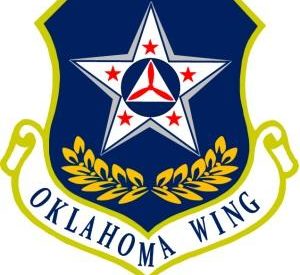Back In Action: Oklahoma CAP Unit Gets Active
Mike Seals - July 21, 2021 10:22 pm

First Time Since Pandemic
by Cadet 2nd Lieutenant Emily Dresel, CAP
Jenks, Okla. (July 10, 2021) – “Nothing can stop us” was the unspoken motto of the Broken Arrow Composite Squadron, Jenks Flight, as they marched forward through the pandemic. This can-do attitude didn’t make the restrictions any less grueling, and the entirety of the flight (also known as Riverside) rejoiced when they were finally able to meet in-person again, albeit with masks. When Oklahoma moved into Phase Three, removing the mask mandate, another cheer rang through Riverside. At last, the cadets could participate in PT again.
Physical Training (PT), short for Cadet Physical Fitness Training (CPFT) involves three fundamental fitness components: a mile run, pushups, and curl-ups. In celebration of their regained freedom, the Jenks Flight decided to go above and beyond the basics for their first PT meeting since the pandemic hit. Lt. Col. Bill Shannon, the flight’s fitness education officer, organized an evening full of physical fitness activities at the Sapulpa High School football stadium.
Things kicked off on June 7th at 6 p.m. with opening formation, safety and stretches and then a mile run. It took four laps around the track surrounding the football field to equal 1 mile. As the cadets took off on their first lap, four adults readied themselves, holding a handful of colored sticks–one color per adult. The first cadets rounded the final corner, Master Sgt. Faun Daves stood at the ready, a yellow stick in his outstretched hand. Yellow, green, blue, red; each stick a cadet collected signified the number of laps they had completed. A cadet’s mile was over once they collected the red stick (along with the other three colors before it).
After the mile run concluded, cadets paired off for pushups and curl-ups. Next came the big event that the cadets had been anticipating (or dreading). Shannon had designed and organized a strength training course; several stations lined one endzone. Cadets started the stations in no particular order and worked through them in a counterclockwise rotation. On the station to the far right, cadets jogged from one end of the football field to the other and back. Moving left, cadets carried a total of four ammo cans filled with sand to the 5, 10, 15, and 20-yard lines or brought the ammo cans back to the endzone, depending on the cadet before them; carried two water canisters to the 20-yard line and back; flipped tires to the 10-yard line and back; pushed a weighted sled to the 20-yard line and back; and once again jogged from one end of the field to the other and back. Each cadet ran through the course twice.
Although weary from the exercise, the cadets all left with smiles on their faces. PT is an integral part of the cadet program, not only because it encourages cadets to maintain a healthy, physically active lifestyle, but because it builds teamwork and esprit de corps. During Riverside’s first PT night since the pandemic, all the cadets rallied around the final cadet left completing the strength training course, cheering her on as she pushed the sled to the twenty-yard line and back. All she had left was to jog down the football field and back. The cadets jogged with her, despite being exhausted themselves, continuing to cheer her on.
“Great job last night cadets,” Capt. Brandon Lunsford, Riverside’s deputy commander for cadets, said in a unit-wide announcement the next day. “You crushed the testing and challenged yourselves in the strength training course. Very proud of you all.”
To learn more about Civil Air Patrol’s Jenks Riverside Flight, visit okwg.cap.gov/jenks
###
About Civil Air Patrol
Now celebrating its 80th year, Civil Air Patrol is the official auxiliary of the U.S. Air Force and as such is a member of its Total Force. In its auxiliary role, CAP operates a fleet of 560 single-engine Cessna aircraft and more than 2,000 small Unmanned Aircraft Systems (sUAS) and performs about 90% of all search and rescue operations within the contiguous United States as tasked by the Air Force Rescue Coordination Center. Often using innovative cellphone forensics and radar analysis software, CAP was credited by the AFRCC with saving 130 lives during the past fiscal year. CAP’s 60,000 members also perform homeland security, disaster relief and drug interdiction missions at the request of federal, state and local agencies. As a nonprofit organization, CAP plays a leading role in aerospace education using national academic standards-based STEM (science, technology, engineering and math) education. Members also serve as mentors to 24,000 young people participating in CAP’s Cadet Programs.
Visit www.CAP.News or www.GoCivilAirPatrol.com for more information.



